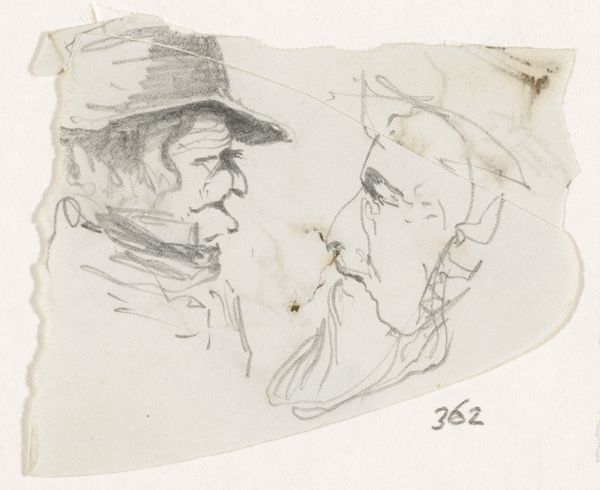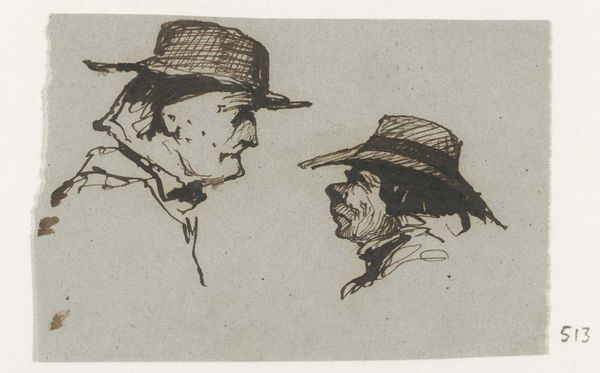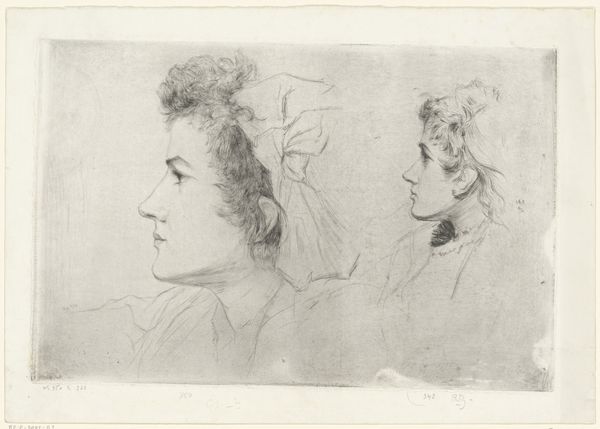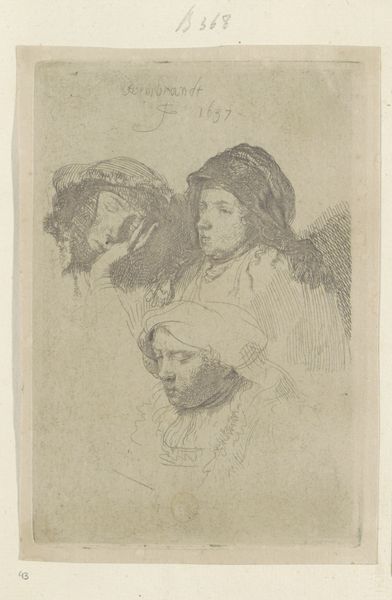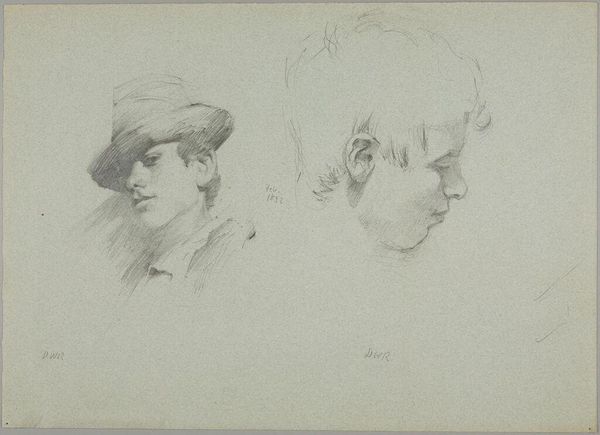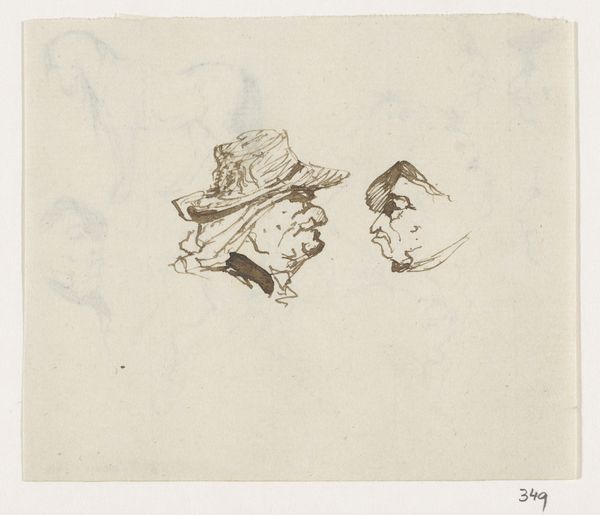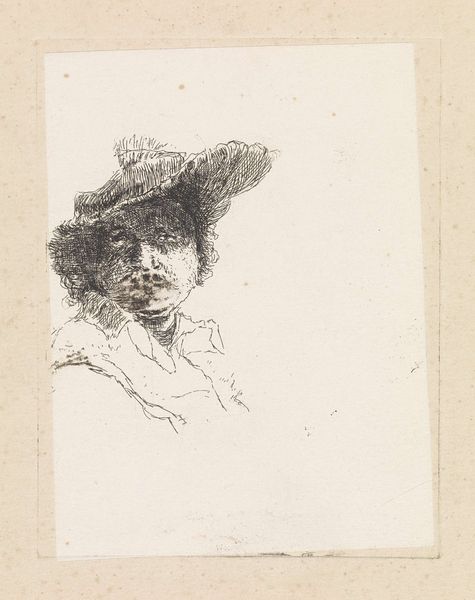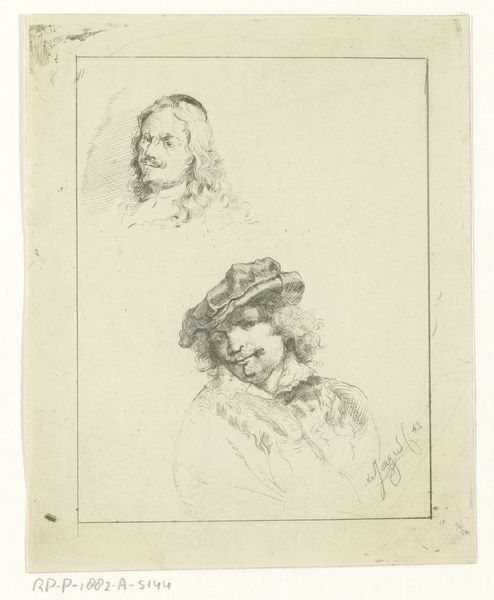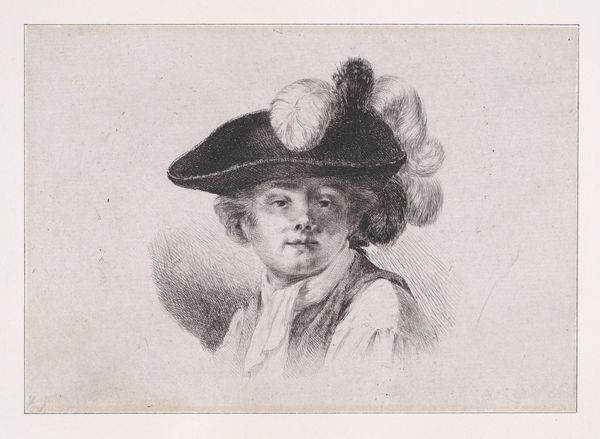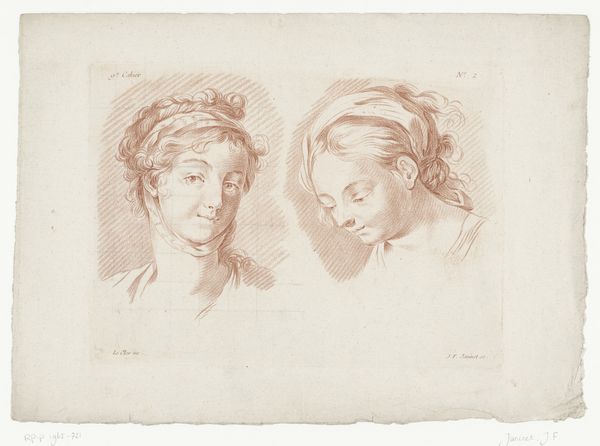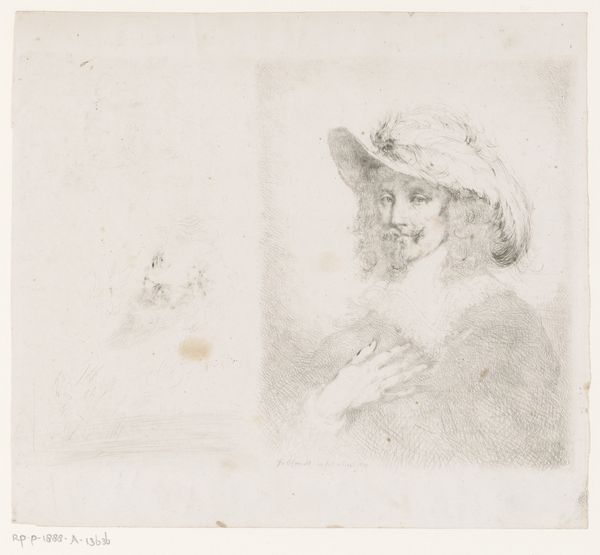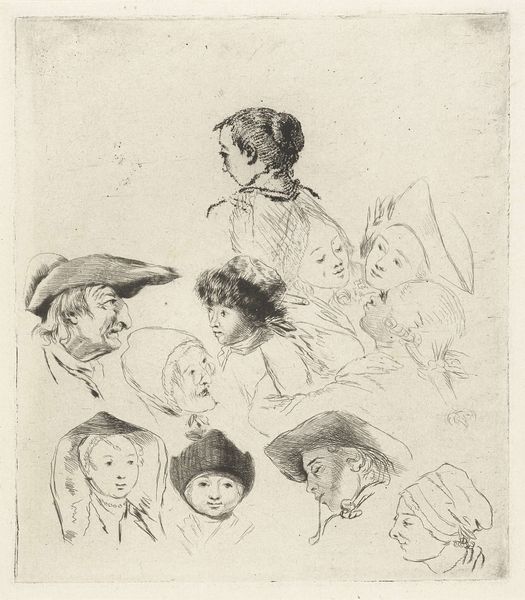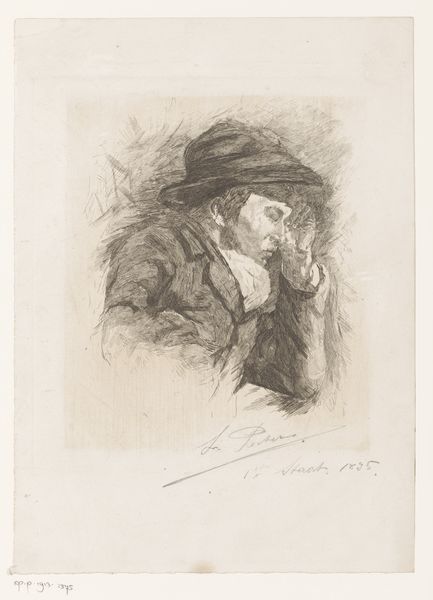
drawing, graphite
#
portrait
#
drawing
#
romanticism
#
graphite
#
realism
Dimensions: height 243 mm, width 338 mm
Copyright: Rijks Museum: Open Domain
Curator: Pieter Veldhuijzen’s "Mannen met hoed," or "Men with Hats," created between 1831 and 1832 using graphite, presents us with two distinct figures. What's your initial take on this drawing? Editor: It strikes me as remarkably melancholic, despite the mundane subject. There’s a certain introspective quality conveyed through their averted gazes, almost a yearning present. Curator: The very nature of graphite as a medium—think about its production, mined from the earth, processed—and its ready availability, allowed Veldhuijzen to explore realistic depiction of everyday people without the grand gestures associated with painting in that era. How do the hats, specifically, function in portraying these men? Editor: Well, the hats are a significant symbol here. They're not emblems of aristocracy or status, but rather utilitarian items, perhaps indicators of trade or region. Symbolically, they cast the face in shadow, which deepens the aura of mystery. These hats are a shelter against something, physically and maybe emotionally. Curator: Right. Their posture too. Notice the attention given to fabric rendering. We should not overlook that his clothing represents a certain social class of laborers that were slowly becoming represented by artists. The clothing, albeit simple, reflects a clear shift from idealizing nobility to portraying common people with respect and interest. What narrative might Veldhuijzen be constructing by immortalizing the image of the everyday? Editor: He's embedding a sense of inherent dignity into figures easily overlooked. The Romantic undertones lend significance to common experience and suggest, culturally, a deep appreciation for individuals. Veldhuijzen uses familiar and simple details to construct what Roland Barthes calls “mythologies” – that is, the making of culturally significant icons, in this case not saints or leaders, but anonymous figures elevated in social conscience. Curator: Precisely. It's the tension between Romanticism's grand narratives and realism’s grounding in tangible details that makes this such a compelling work for me, one that speaks about social progress in materials and production. Editor: Ultimately, Veldhuijzen offers us access into a specific cultural memory, a look into how identities, even those that seem ordinary on the surface, are potent.
Comments
No comments
Be the first to comment and join the conversation on the ultimate creative platform.
